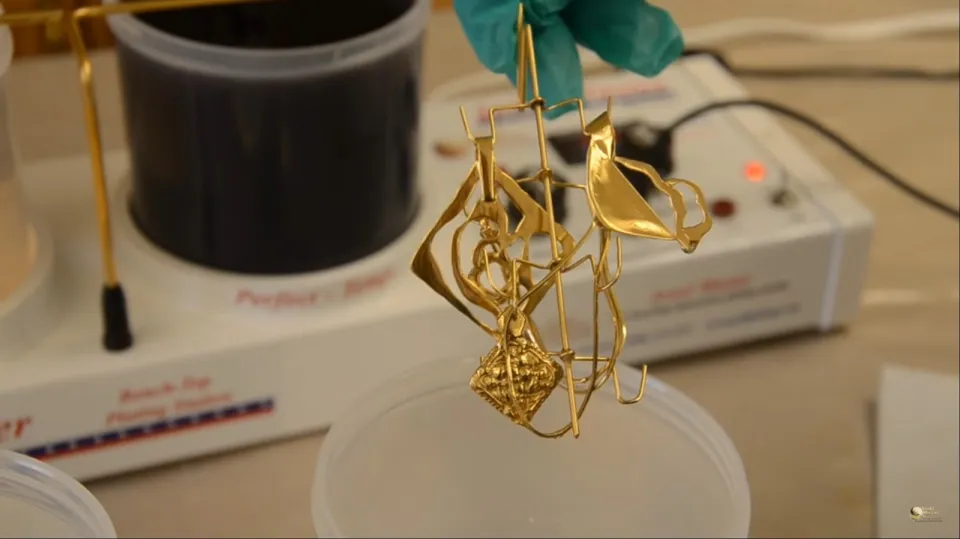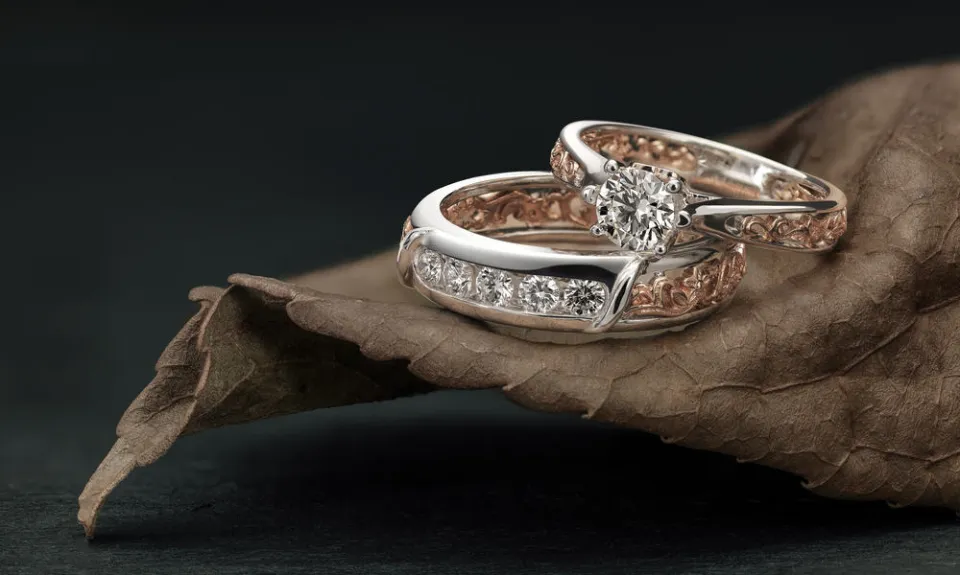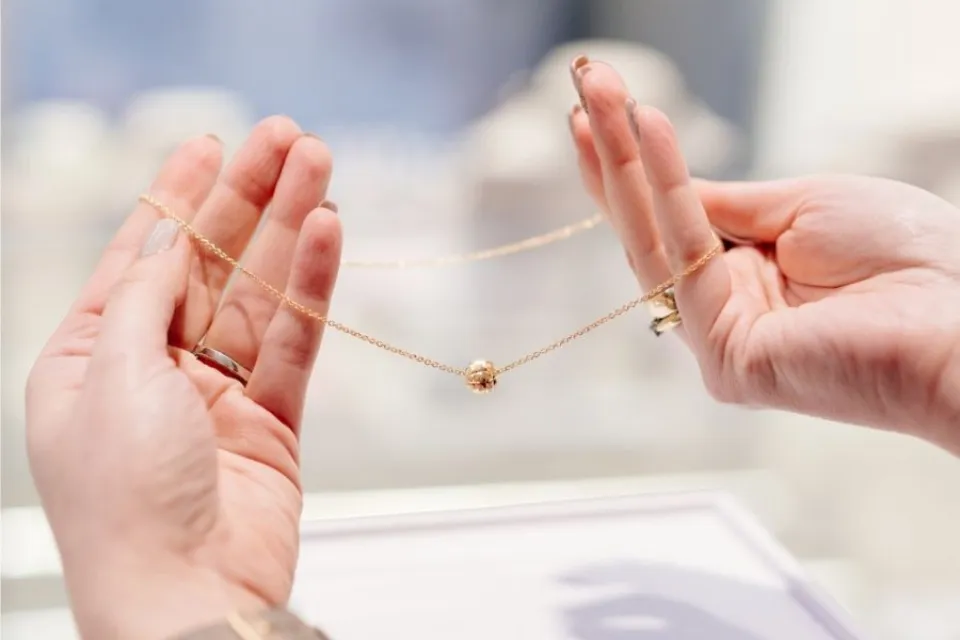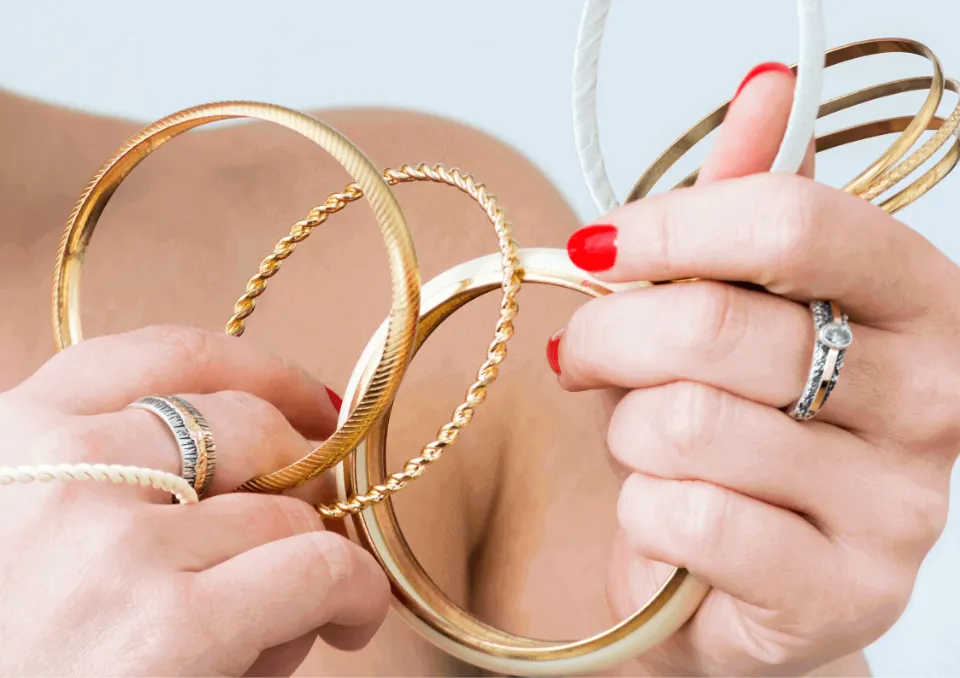If you are interested in how to gold plate jewelry, here is everything you need to know.
Items that are gold plated, also known as electroplated, are made by covering another type of metal with a layer of gold.
Gold plating is done to make jewelry that is made of inferior metal look like gold.
Let’s begin by discussing the process of gold plating without further ado.
Definition of Gold Plating
Gold plated jewelry means taking a piece of jewelry and covering it in gold.
In this manner, jewelry made of various materials can essentially turn into gold.
Both fashion jewelry and costume jewelry frequently employ this technique. Either way, common people can profit.
It’s a fantastic way to stretch your budget. But it’s crucial to be aware that over time, gold plating will tarnish and slightly rub off.
How to Gold Plate Jewelry?
Here is a step by step guide on gold plating process.
Prepare the Surface
The metal surface that will be plated must first be thoroughly cleaned of any dirt or oil.
The surface to be plated can be stripped, polished, sandblasted, or tumbled in order to get rid of all of the dirt. Solvents, abrasive materials, or acid etching can all be used for this cleaning.
A poor or incomplete adhesion could result from improper surface preparation, which could contaminate the tank.
Clean Thoroughly
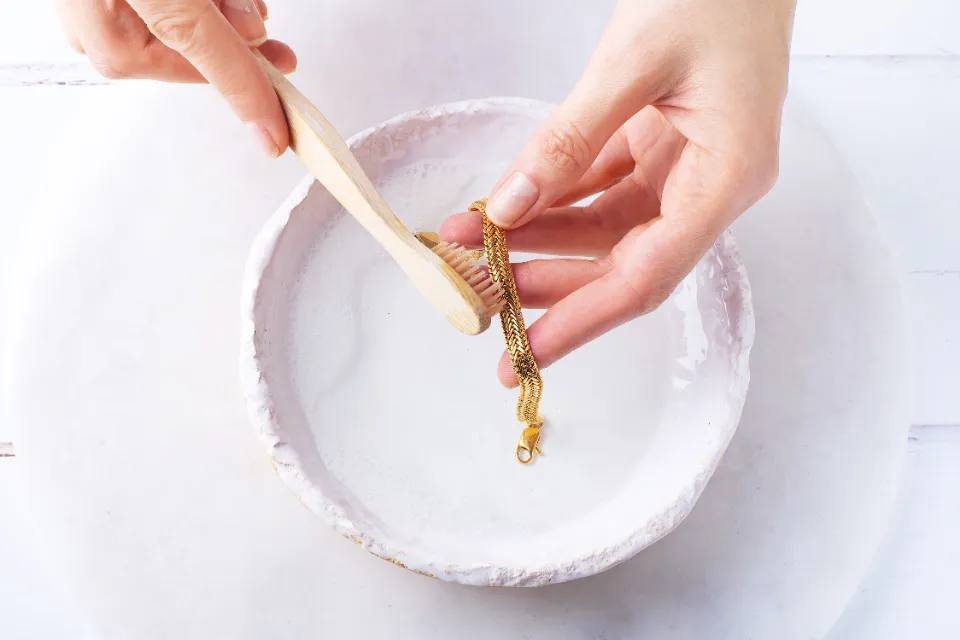
The surface that will be plated must first be cleaned, typically with electro cleaning, steaming, or ultrasonic cleaning.
This is merely a second round of thorough cleaning to ensure that no oil or dirt is left behind. Jewelry with intricate crevices can be cleaned well with steam cleaning.
Rinse to Remove Cleaners
To get rid of any remaining cleaning agent residue, rinse the jewelry that will be gold plated with water.
Adhere the Strike Layer
A strike layer, also referred to as a flash layer, is a nickel-plating that is affixed to the original metal piece.
The gold and the underlying surface will adhere better thanks to the nickel layer. It also prevents contaminants from spoiling the gold plating tank, and it stops metals from mixing and possibly reacting negatively.
Second Rinse
To remove any remaining cleaners, the jewelry must be thoroughly washed with water once more.
Apply the Base Coat
Layers of metals like copper, nickel, and silver are added in this step. In the final step, gold is deposited on top of the surface.
Final Coat
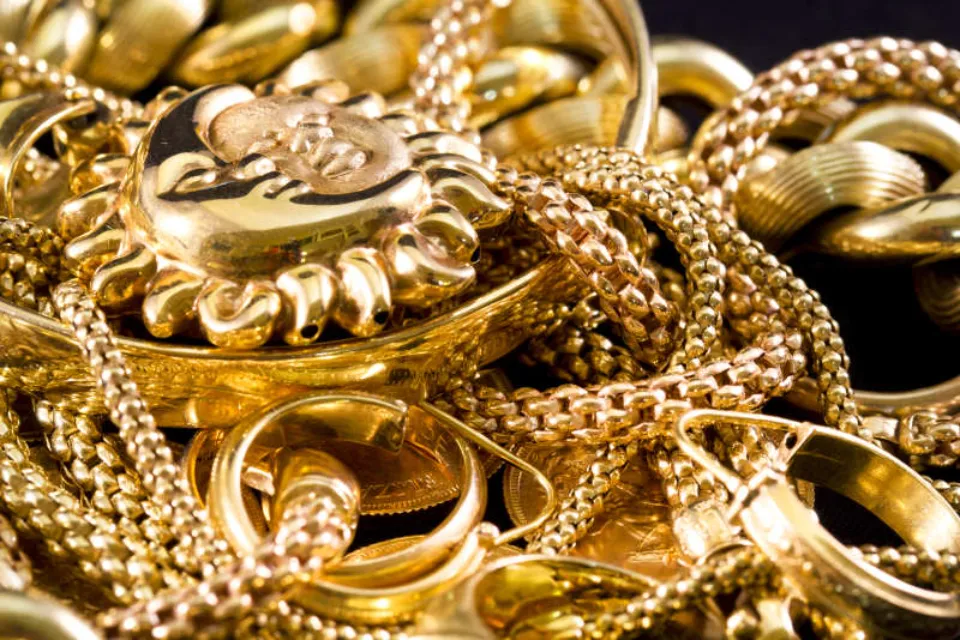
The jewelry is immersed in the plating solution to draw out the gold ions or other final metal that will be visible on the jewelry’s surface. Temperatures and voltages must be adjusted for various metals.
Hanging from a cathode bar are the jewelry items that will be electroplated. This is a fancy name for a rod that has a strong negative electric charge.
They then go under the solution tank for gold plating. which is positively charged. The positively charged gold ions will be drawn to the negatively charged jewelry, plating it as a result.
Final Rinse
Finally, the plated jewelry is rinsed in water and hung to dry, making sure that the different pieces do not touch each other.
The exciting activity of gold plating combines art and science. Once people start, they often find that they become addicted to this rewarding habit.
Can Gold Plating Tarnish?
This query has a challenging answer. Since it is an inert metal, gold has no purpose if it tarnishes.
Consequently, why did one of your friends claim that their gold-plated bracelet had become tarnished?
Well, the metal that has been plated mixes with the plating, and when it tarnishes, it just looks like the gold plating has tarnished.
Put your gold-plated jewelry in a plastic bag, which might seem like an odd suggestion, to prevent tarnishing.
Squish down all the excess air.
The jewelry won’t tarnish if it is kept out of the air.
How Long Does Gold-Plating Last?
There is some fading after gold plating. One of the costs associated with saving money is that.
Necklaces and earrings might not flake or wear thin for more than a year.
Rings can last almost as long if worn only on the weekends, during special occasions, etc.
Most of what is trouble for gold-plated items is being bumped around, scratched against surfaces, etc.
That’s why the best approach for gold-plated is to put it on for a party, then clean gold plated jewelry and store it properly.
Wearing it all day at the office will shorten its life to a matter of months.
Sweating is another thing to consider because the acid in perspiration will corrode gold plating.
If you think you’ll be sparkling, try your best to remove the jewelry so the ring or bracelet can continue to shine.
Related Post: How Long Does Gold-plated Jewelry Last?
Final Words on How to Gold Plate Jewelry
When trying to look stylish on a tight budget, gold-plated jewelry may be the answer. Simply keep in mind what we just said and proceed accordingly.
Gold plating has varying levels of ‘clingyness’ to different metals. As an illustration, gold and silver have a strong bond. Because of this, gold plating over silver will last longer than gold plating over other base metals.
Plating is long lasting over a base of gold. In contrast to 18kt yellow gold over sterling silver, 18kt gold plating over 14kt gold lasts longer. The base metal used in gold plating therefore has a big impact on how long the plating process will last.
Read More:
FAQs
Can You Do Gold Plating at Home?
Gold plating can be done at home because it is a simple technique if you have the proper tools and knowledge.
Do Jewellers Do Gold Plating?
Not every jeweler has an electroplating tank or plating experience. Small shops might decline your request because, regardless of their resources or level of expertise, they simply lack the capacity to repair your piece.
How to Make Gold Plated Jewelry Last?
The simplest way to keep your gold-plated jewelry looking brand new is to wipe it with a damp microfiber cloth or piece of cotton after wearing it.

